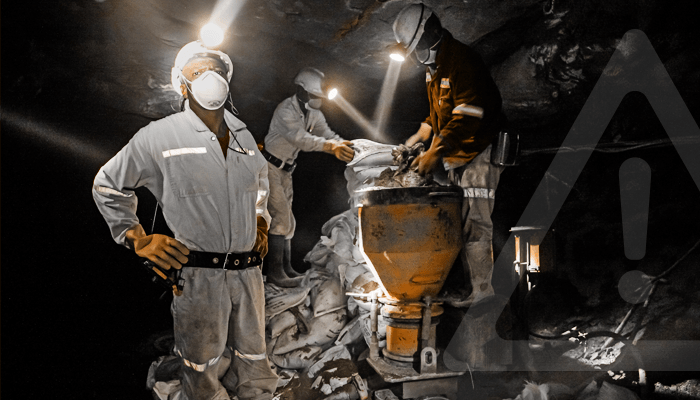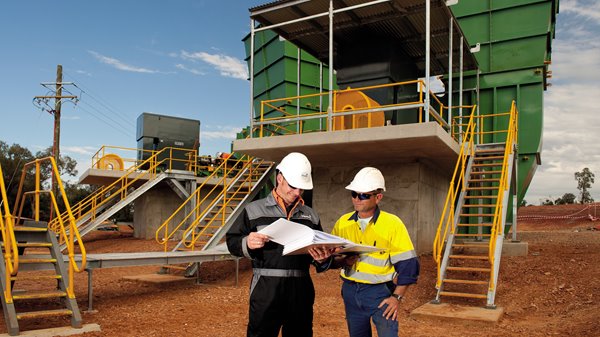
Articles
Learn more about how our products and services help customers just like you on a daily basis.
Renowned as one of the most dangerous jobs in the world - and for good reason. Cave-ins, explosions, toxic air, and extreme temperatures are some of the most perilous hazards observed to take place in underground mining.
Valuable minerals are found all over the world. And most often the only way to get to them is by mining into the earth’s ground. Not an easy or riskless feat to achieve even in the simplest of locations.
Due to the nature of mineral extraction - literally drilling into the surface of the earth and sending men into cavernous and potentially toxic spaces with heavy machinery and equipment - mining is an extremely dangerous job. With a death toll that reflects this.
The loss of life has been staggering over the many years that it has been in practice. As are the hazards that miners face on a day to day basis.
Although the mining industry employs only 1% of the global labour force, it generates 8% of all fatal accidents.
Over the years mining has become much safer. Numerous measures have been, and are being, put in place to improve the safety of the miners and improve the environment in which they work.
However, the reality is, mines can still be unpredictable. And accidents can happen.
From mine cave-ins and gas explosions that could kill in an instant. To poor air quality in confined spaces that cause long-term health problems. Mining offers a lot to be wary of. This article will take a look at five reasons why mining is considered to be one of the most dangerous jobs in the world - and what can be done to change this.
The nightmare of being ‘buried alive’ can be a very real concern for miners. Mine cave-ins or mine collapses are some of the most widely reported mining accidents that happen all over the world.
For example the 2010 rescue of 33 miners from a collapsed mine in the Atacama region of Chile where the miners ended up trapped 2,300 feet underground for over two months.
Cave-ins happen when the supporting pillars within the mine fail, letting go of their load causing a catastrophic chain of events. Powerful and hazardous airblasts can occur causing flying debris and falling rocks that can block tunnels, maim workers, release toxic or explosive gases, or cause flooding.
Often cave-ins occur due to the less predictable hazard of seismic activity - earth tremors and earthquakes that can result in further landslides and earthfall. These cannot always be predicted - but they should be properly assessed and prepared for before even beginning mining activities in that area.
Cave-ins can also be caused by improper mining activities - such as blasting or so-called retreat mining. Blasting is the use of explosives to clear areas of the mine, if done improperly it can cause earthquake-like results that damage the support pillars causing a collapse.
Retreat mining is a questionable practice in which the pillars that support the mine roof are partially removed as they finish excavating and are exiting the mine, as they remove the supporting pillar they are toeing the line of a collapse.
Better safety regulations in the mining industry are needed to prevent these sorts of disasters. Mines located in seismically active regions are at even more risk and need stricter regulations. Advances in technology is one of the best ways to help identify possible seismic activity. When prevention isn’t an option they must have well-planned and implemented safety procedures in place.
Howden’s VentSim DESIGN is an underground mine ventilation simulation software package designed to model and simulate ventilation, airflows, pressures, heat, gases, financials, radon, fire, and many other types of ventilation data from a model of tunnels and shafts.
.jpg)
Thankfully, these days, mine explosions are rare. But when they do occur they cause catastrophic damage and the highest number of casualties. Mines are often home to many dangerous gases including carbon monoxide, hydrogen sulfide, methane, and carbon dioxide.
Due to the confined spaces, these gases are not always able to escape, building up within the mine. And due to their combustible, explosive, or toxic qualities, this is a very serious issue.
Gases are produced or released during mining operations including drilling and blasting by mining machinery such as diesel and gasoline motors, and by other means such as the decay of timbers, the aftereffects of mine fires, and chemical processes like oxidation.
To find out more about the gases in mines read our article: The Most Dangerous Gases In Mining: Damp Gases
The most common gas to cause underground mine explosions is methane. Methane is a colourless, odourless, highly flammable, and highly explosive noxious gas that occurs naturally and gets trapped in coal layers.
Methane becomes combustible at levels between 5% and 14% in the air. All it takes is a naked flame or a spark from a machine to cause an explosion when these levels of methane are in the air.
Following a methane explosion, consecutive coal dust explosions can also occur. This is due to the shockwave from the methane explosion causing fine particles of coal dust to disperse which can then also ignite from the heat.
The worst mine disaster to take place in Europe was directly caused by methane and dust. 1,099 miners were killed in Northern France on March 10, 1906.
Limestone is often used to prevent coal dust explosions. The spreading of limestone powder over the coal dust will either stop the chain reaction from happening or reduce the intensity of the explosion.
The best prevention to avoid methane explosions is high-quality mine ventilation solutions.
Quality mine ventilation provides a flow of air through the required areas of the mine, which dilutes and removes any build-up of dangerous gases leaving safe and breathable air.
Not only are gases in mines a hazard for explosions, but gases along with other contaminants in the air - dust and fumes - can have a serious effect on the air quality that the miners breathe.
Toxic gases can kill a miner simply by being present in the air long before an explosion even has time to find a source of ignition.
The atmosphere within an underground mine is limited and confined and if gases, dust, and fumes are not controlled, extracted, or diluted to acceptable levels they can seriously harm or even kill the miners that breathe them in.
Many of the gases found are toxic and have the ability to displace oxygen from the air causing asphyxia in humans. Without enough oxygen to the brain, headaches, nausea, and dizziness will occur, and can ultimately result in death when the oxygen concentration drops below 6%.
Again, high-quality mine ventilation is a life-saving prevention technology that provides clean air flow in mines making it safe for miners to breathe.

Miners are regularly exposed to harmful contaminants in the air such as silica dust and other mineral dust. This puts them at a greater risk of developing respiratory illnesses such as pneumoconiosis, aka the black lung and silicosis over a long period of time.
Pneumoconiosis is a group of lung diseases that can cause disability, impairment, and even death. There is currently no treatment that can cure these diseases, therefore prevention is crucial.
The best form of prevention is firstly reducing the risk that the miners will encounter the dangerous air through exposure assessments and constant monitoring. Regulations are in place that prevents miners from working below an acceptable level of coal dust and this must be adhered to.
Air sampling instruments are used to test for high levels of mineral dust with the results deciding if control technologies should be implemented in the most high-risk areas.
Howden’s VentSim Solutions including VentLog can help you quickly understand the conditions in any area of your mine and make necessary adjustments.
Mining is an industry that occurs all over the world. Even in the most remote places where temperatures drop as low as -50°C. Or as high as 60°C.
Extreme conditions can make for perilous working conditions, with miners not only having to worry about the extreme temperatures damaging their equipment, but the risk of their own health and safety.
To prevent any lapse in production the mine must stay working efficiently and effectively, ensuring workers are safe while the mines remain operational. Protective clothing must be provided to the workers in the cold and exposure to the outside must be kept to a minimum.
Equipment such as heating systems are used to create a safe environment for the cold mine workers as well as keep the equipment optimised and operational throughout the project. To combat the heat - air conditioning in the form of cooling systems including ammonia chillers, bulk air coolers and skid mounted cooling units.
Find out how Howden provides ventilation solutions to some of the toughest environments with their

The reality is, mining has been, and will still be around for a very long time to come.
One way to combat the ever-dangerous mining environments is the innovation of equipment and software, and more automation. Not only does this prevent miners from being put into potentially dangerous environments but it could open up new, safer roles within this ever-changing industry.
For more than a century Howden has supplied ventilation equipment to every major mining company in the world, from frozen sites in the Arctic and the hottest nations in Africa.
Howden has made an evolutionary leap forward in the concept, design, engineering, equipment and control of mine ventilation with the Total Mine Ventilation Solution (TMVS).
This is an integrated suite of expertise, products, and services that reduces operating costs and increases safety and production. It includes:
Find out more by downloading your Total Mine Ventilation Solutions brochure today. You won’t be disappointed.
.jpg?ext=.jpg)